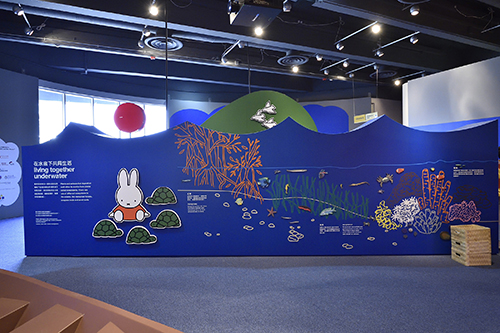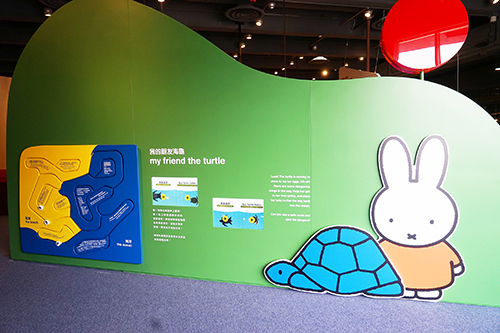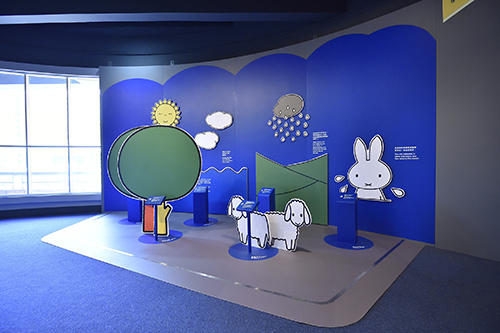Exhibition Content
The ocean covers more than 70 percent of the surface of our planet yet it may not be obvious that its health is crucial to the creatures on Earth including us. In this exhibition, Miffy will tell you that the ocean is an essential part of the water cycle and half of the oxygen we breath is actually made from the plankton in the ocean. You can also get a glimpse of the different ecosystems like mangroves and admire the symbiotic relationship between different sea creatures, e.g. shrimp and goby fish share a home. Nowadays, our ocean is facing with a lot of crisis. Every year 8 million tonnes of plastic end up in our beautiful ocean and various animals like seabirds, fish, turtles have mistaken them as food and died after eating it. To save the ocean, Miffy invite you to join force to protect the ocean and its animals and advise you how it can be done.

Miffy at the seashore
Come and learn how different creatures, say shrimp and goby fish, live and work together to survive. From such relationship, the creatures may get protection, cleaning, food and even “transportation services”.

All aboard with Miffy
The children are welcome on board and watch a three-minute video showing how plastic will become a dangerous “disease” and threaten sea animals in the ocean and even human beings. Through the video footages, children are encouraged to reduce the use of plastics and making it recycle.
 Living together underwater
Living together underwater
A magnetic wall introduces different ecosystems in the ocean, like mangrove, seagrass beds and coral reefs. The children could help various sea creatures to go back to their habitat zones and learn the relationship between the ecosystems and the sea animals.

Take a look at plankton
Plankton are the diverse organisms drifting in the ocean and they play an important role in the marine ecosystems by providing food to aquatic organisms. The children are able to see and compare their appearances of different plankton specimens with the aid of a microscope.
 My friend the turtle
My friend the turtle
Turtles will lay eggs on the beach. After hatching, young turtles will swim back to ocean for finding food. However, there are so many dangerous traps which threaten their lives on their way back to the ocean. Through an interactive game, the children could help turtles find a safe route by cleaning garbage on the beach and removing the plastics in the ocean.
 Where does water come from?
Where does water come from?
Water is important to all living organisms. Do you know where does water come from? This exhibit allows young children to learn more about relationship between water vapour, cloud, rain, rivers and oceans. They will become a water droplet and start an interesting journey to discover more about water cycle.







